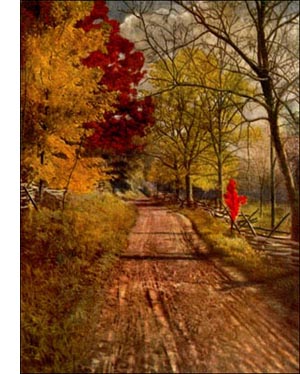Red Mangrove Tree
 Red Mangrove (Rhizophora Mangle, Linn.)-A round-topped tree, 15 to 25 feet high, with drooping, aerial roots. Occasionally 75 feet high, with small, narrow head. Bark reddish brown or grey, irregularly broken by shallow fissures; branches smooth.
Red Mangrove (Rhizophora Mangle, Linn.)-A round-topped tree, 15 to 25 feet high, with drooping, aerial roots. Occasionally 75 feet high, with small, narrow head. Bark reddish brown or grey, irregularly broken by shallow fissures; branches smooth. Wood reddish brown, streaked with paler brown, hard, heavy, Jose grained. Leaves persistent, thick, oval, blunt, 3 to 5 inches long, dark green and shining above, paler beneath; margins entire. Flowers, axillary, perfect, 2 to 3 on short stalk, petals 4, yellow, hairy inside; ever-blooming.
Fruit berry-like, 1 inch long, with leathery, rough, brown skin; 4 calyx lobes curl back from base, and tube of developing cotyledon of germinating seed protrudes from apex. Preferred habitat, along coasts and rivers in wet soil.
Distribution, Florida from Mosquito Inlet to Cedar Keys, rounding the southern end of the peninsula, and outlying islands. Uses: Wood for wharf piles and fuel. Bark yields tannin, and a decoction of it is used as a febrifuge.
This is the true mangrove of the West Indies and the Florida coast, found also along the Pacific coast of Mexico and Lower California. With the coral polyp it co-operates to extend the borders of island and mainland.
It spreads in monotonous green thickets over marshy coast plains and in the estuaries of rivers, forming almost impassable stretches of arching roots, accumulating rubbish of all sorts that finally lifts the level above the tide and makes solid ground that is soon covered with the characteristic vegetation of the tropics. Mangrove islands of varying sizes now dot the surface of shallow bays which a few years ago were quite destitute of islands.
The tree reaches its greatest height on dry ground back from the coast. Here the trees grow tall and bare of limbs for two-thirds of their height, and almost abandon the habit of throwing down aerial roots. The wood is used for fuel and built into wharfs. It is not counted a valuable tree.